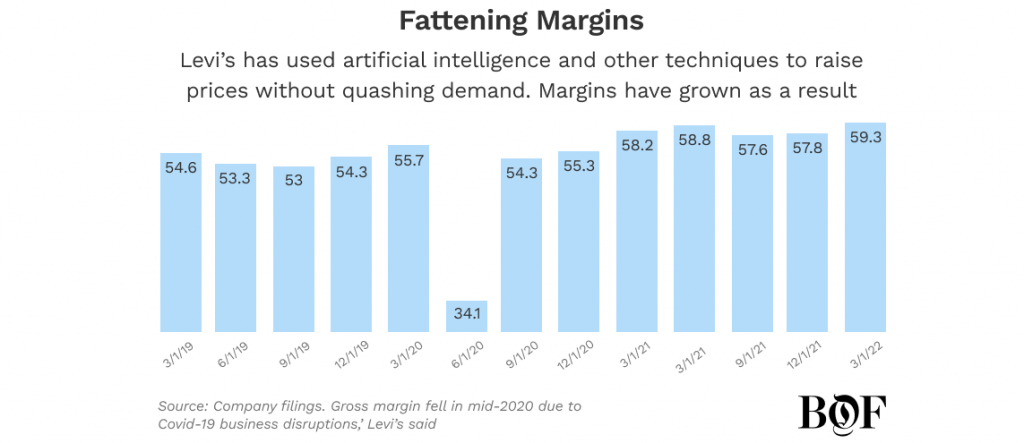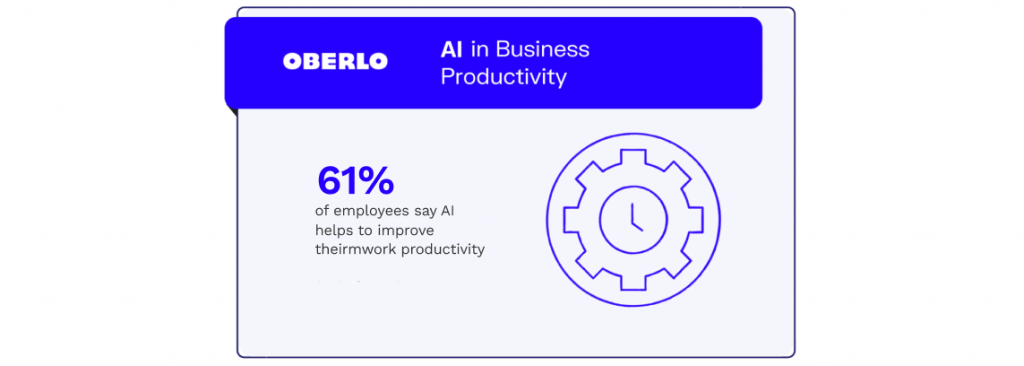How to Make Your Price Setting Process More Efficient
How to Make Your Price Setting Process More Efficient
Pricing products has become far more complex due to inflation and recession worries. As a result, the cost of goods rises while shoppers spend less. So, when eCommerce brands raise prices to offset new costs, they risk losing customers. However, keeping the price the same risks losing profits. Current price setting processes aren’t enough to find a careful balance between marketability and profit.
There’s a new way to set more efficient prices, which leads to greater profits. Learn how artificial intelligence takes the guesswork out of pricing and ensures your company always comes out on top.
Key Takeaways:
- Price optimization uses AI to analyze data and predict trends for the optimal product prices
- Levi’s saw consistent growth despite economic upheaval because it used AI to stay ahead of changes
- Using advanced data analytic platforms helps you collect and clean the necessary data for more accurate predictions
- AI price setting reduces expenses while boosting profits
What Is AI Price Setting?
AI price setting uses artificial intelligence to gather data on product costs, expenses, and contributing factors. AI price setting uses artificial intelligence to gather data on product costs, expenses, competitor pricing, sales velocity, demand, sensitivity, and several other contributing factors. Then, AI uses that data to assess risk and find profit opportunities. After detailed analytics, AI prices items competitively, so you make a profit without losing customers.
AI price setting means product prices fluctuate more often to keep your company competitive. An example of a big retailer that uses AI price setting is Amazon. Products on Amazon constantly change prices. Some items may even adjust from day to day as supply, demand, and customer behavior change.
Amazon uses an extreme form of price setting that changes prices in real time. Meanwhile, retail companies tend to take a more conservative approach and adjust prices less frequently. However, even with less-frequent price adjustments, you can still proactively address market changes and adapt accordingly.
Price Optimization Example: Levi’s Boosts Margins Through AI
Does price optimization for eCommerce really work?
Levi’s price-setting process results give a resounding yes. Through their efficient use of AI pricing, Levi’s was not only able to maintain profits but increase their margins throughout the pandemic and beyond.
While global retail brands were dropping prices to stay afloat, Levi’s used AI to assess the risks and opportunities. As a result, the company didn’t need to lower costs at the same rate as competitors.
By March 2022, Levi’s margins reached 59.3%, higher than their March 2020 margins of 55.7%.

How Price Optimization Is Changing
Price optimization using AI is not a new idea. It’s been around for years but is gaining recent popularity because of advancements in technology. New technology allows businesses to process much larger datasets for more accurate insights since data is the backbone of price optimization.
AI relies on data to detect patterns and make accurate risk evaluations. Data collection software tracks thousands of data sources to see patterns.
The traditional approach to price optimization looks at changes in the market. Then, AI automatically increases product costs to offset any extra expenses. Then, when costs decrease, product prices drop by a similar percentage.
However, big data allows companies to see a larger picture of price inflections. It can look at other factors that might affect the price, like:
- Weather forecasts
- Gas prices
- Outbreaks
- Political events
- Regulation changes
- Social media trends
For example, Levi’s saw a change in shopping behavior between cities with different weather patterns. Then, they could use weather forecasts to help adjust prices for each location.
Challenges of eCommerce Price Optimization
With significant changes also comes additional challenges that companies haven’t faced before. Awareness of potential challenges helps your company make provisions for them so you can address issues before they impact your profits.
Large Datasets
As AI incorporates more data, it also introduces more data quality challenges. Clean data is accurate information and requires regular audits. Audits look for inaccuracies, errors, contradictions, and duplicate information that might negatively influence pricing optimization.
That way, your price process always works with the most accurate information.

Dynamic Pricing
Customers are still accustomed to fixed prices and expect most products to keep the same price from one day to the next. While some companies are adopting dynamic pricing that can change daily or even hourly, like airfare, hotels, and Amazon, these are exceptions rather than the norm.
Before customers accept that prices may change throughout the same day, there may be an adjustment period. However, with time and further AI use, customers will grow accustomed to the new pricing system.
Aligning In-Store Prices with eCommerce Prices
Changing eCommerce prices in real time is much easier than in-store prices. Therefore, companies that only function online will have an easier time adopting AI price optimization. Meanwhile, those with physical stores will need to consider how to adjust physical prices to the eCommerce prices that regularly fluctuate.
Many stores resolve this discrepancy with a disclaimer that online prices are exclusive and vary from in-store costs.
Benefits of Price Optimization in eCommerce
Despite the challenges of eCommerce profit optimization, the benefits far outweigh any potential issues. Learn four primary benefits your business will see after adopting this new AI-powered pricing model.
Reduced Expenses
When your team is sifting through pages of spreadsheets and spending hours analyzing customer behavior, you’re losing valuable company time.
According to 61% of employees, AI improves work productivity – it streamlines the pricing process, so it’s more efficient. That means more hours your employees can spend on core business tasks that directly impact profit and fewer wasted resources on manual tasks that waste valuable resources.

Boosts Sales
Price optimization keeps your company competitive. You don’t have to worry about losing customers because of high prices. AI always finds the sweet pricing spot that keeps you ahead of the competition without compromising profits, even amid economic upheaval.
Improves Profits
AI removes the guesswork out of pricing to keep consistent profits. As a result, you can be more confident in your company’s pricing choices they’re backed with complex data and trends rather than intuition and trial and error.
When you price products based on data, you’ll lose less money to poorly priced products and always find that balance of offsetting expenses to stay competitive.
Proactively Avoids Risks
You don’t need to wait until you feel the hit from supply cost increases or economic changes. Instead, you can build a more dynamic business that proactively manages risks before they occur to minimize (or even eliminate) the loss.
AI provides quick predictions and recommendations so you can respond to changes faster. This helps your company stay ahead of shifts rather than lagging behind the competition.
Take the Guesswork Out of Your Price-Setting Process
Recession fears and economic uncertainties don’t have to dampen your profits. With optimized pricing, you can make more confident pricing decisions based on real-time data.
Hypersonix’s AI-powered system ensures you consistently see profits no matter the challenges the economy throws your way. Use our data analytic system to see fast insights with real-time results, so you’re always ahead of trends and changes.
Schedule a demo to learn more about the potential profits you could earn through AI pricing optimization.





